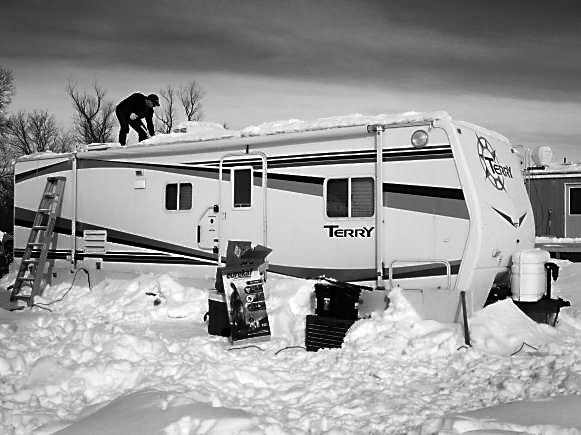
Let’s face it: outside of keeping your favorite goods in
temperature-controlled storage for months at a time, there’s no way to
completely winter-proof anything. Winter is tough and comes with challenges as
wide-ranging as snow and caked mud to freezing rain. But if you want to keep
your RV looking brand new and ensure that it runs as well as ever, there are ways to make it more weather resistant.
Inside: Keeping Your
RV Winter-Ready
You’ll remember from our guide to winterizing your RV
that there are some steps you should take before the winter arrives in full
force. This includes draining all of the RV water systems and treating them
with non-toxic RV anti-freeze. You can find more details at that post for
handling just that.
But what about how the RV feels inside? If you spend a lot of time inside your RV, then
winter is going to be a three-month-long bummer for you and yours…unless you
start taking action now.
The first principle here is insulation. You have a number of options here. The most ambitious
include installing insulating windows or even completely redoing the insulation
of your RV walls—but since those take a lot of time and a lot of money, there
are more affordable alternatives to focus on. First, identify any key “leakage”
points where the boundary between outside and inside is at its thinnest. You
can reinforce these with plastic or wool blankets; some people even use old
wool clothes in order to spot-insulate.
You’ll also want to focus on sealing. If you don’t want a lot of old clothes strewn about your
RV, this is your second best option. The most obvious problem here can be the
door: try opening and closing your door to see if you can spot any areas in
which air might freely move. You can install a rubber weather seal on your RV
door to make sure that when the door is closed, it completely seals out the
weather. This won’t only keep your RV warmer, but will prevent moisture from
getting in and promoting mildew.
Outside: Looking Good
Even When the Weather’s Bad
When the weather’s still dry and relatively warm, give your
RV a good cleaning, dry it thoroughly, and then apply a coat of LifeWax. Wax seals out moisture
and protects your RV from oxidation, which is especially a problem during
winter when your RV is constantly exposed to melting water. If you have custom
graphics installed, upgrade to GraphixWax.
Don’t just make cosmetic changes, either. You might consider
upgrading tires or changing a battery to keep your RV running smoothly during
winter; no matter how hard you work at keeping your RV looking good, these
problems will weigh much more heavily when it’s freezing cold outside and your
RV isn’t functioning properly.
There’s no doubt winter is a challenge. It’s cold, it’s
snowy, and the sun disappears for a long time. But with a little forethought
before the tough weather hits, you can do a lot to maintain the look and functionality of your RV. Just make
sure you do it in time.

